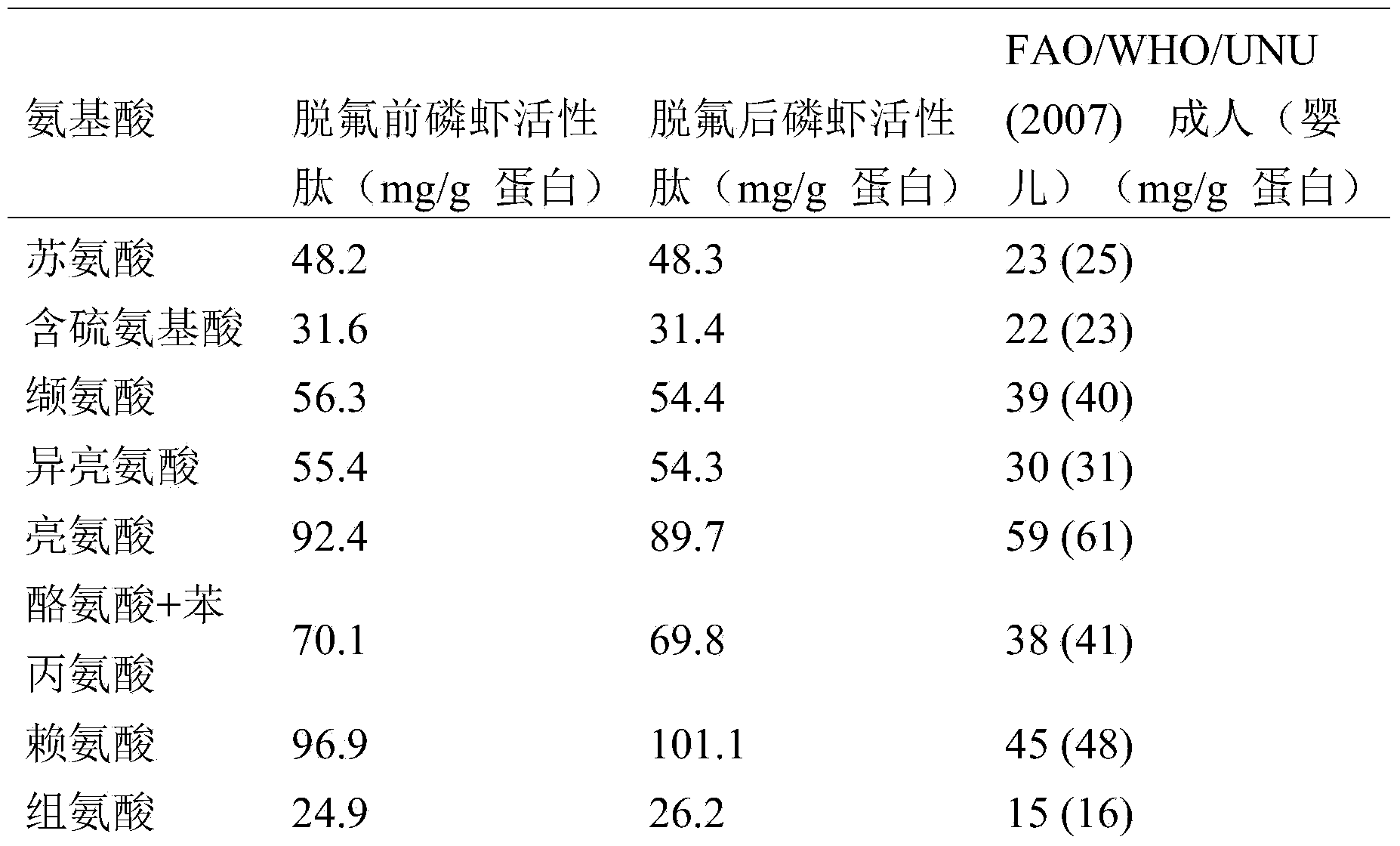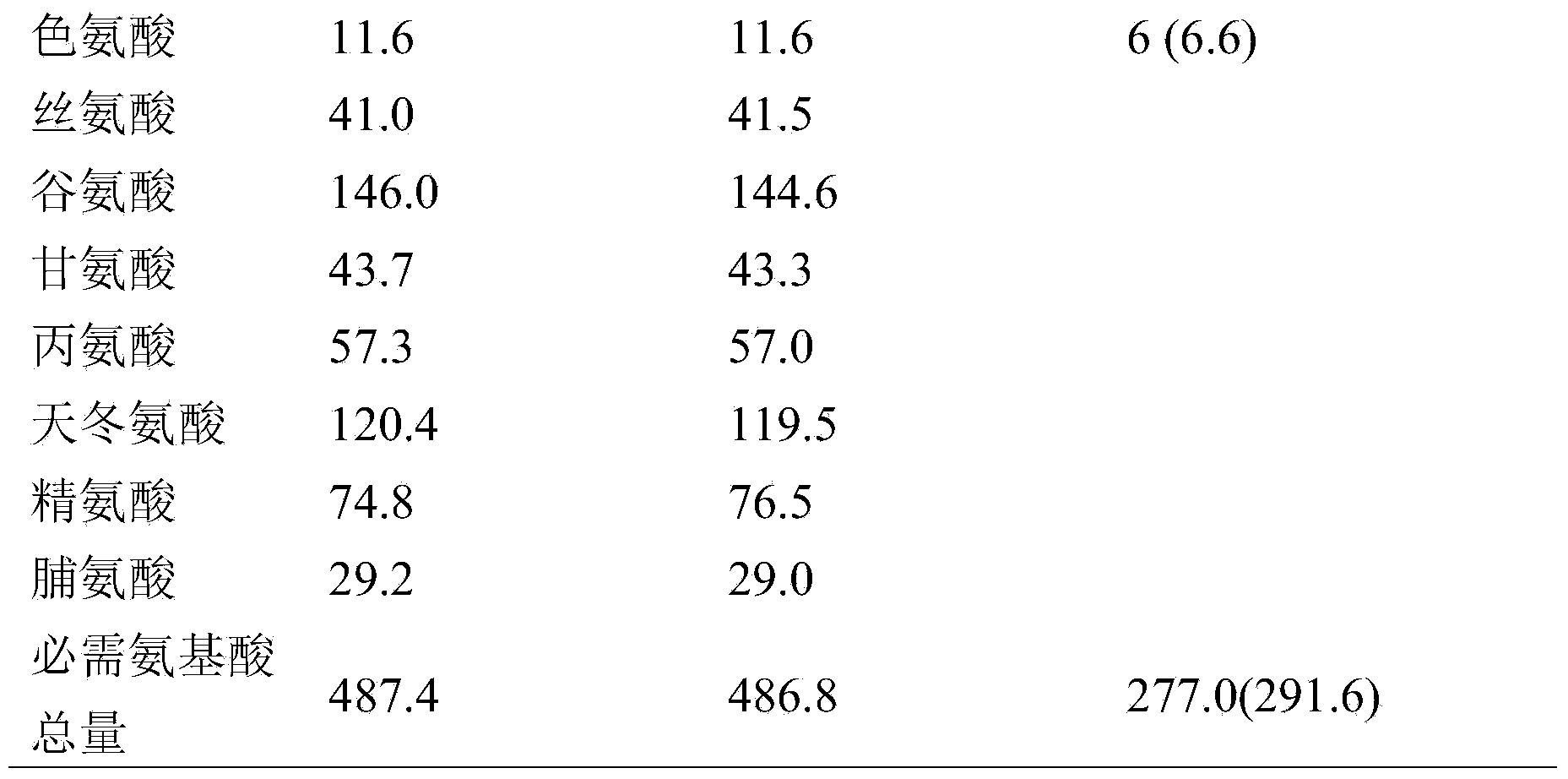Method for reducing fluorine content in water soluble active peptides from Antarctic krill
An Antarctic krill and active peptide technology, applied in fermentation and other directions, can solve the problems of complex equipment, low solubility, high cost, etc., and achieve the effects of less investment in equipment, high product safety, and high product recovery rate
- Summary
- Abstract
- Description
- Claims
- Application Information
AI Technical Summary
Problems solved by technology
Method used
Image
Examples
Embodiment 1
[0022] 1) Take 5kg of Antarctic krill powder, add 60L of distilled water to the krill powder, add 2M HCl to the mixed solution, adjust the pH value of the mixed solution to 7.5, heat up to 45°C, add 75g of neutral protease to the mixed solution, and Stir in the reaction kettle at constant temperature for 10 hours, heat to 100°C to terminate the enzyme reaction, and centrifuge to obtain supernatant A;
[0023] 2) Make the solid content of the supernatant A reach 15% by vacuum concentration, the vacuum degree is 0.08MPa, and the temperature is 40-80°C to obtain solution B;
[0024] 3) Take 10L of solution B, add 100g of calcium hydroxide to it, mix well, and cool to obtain mixed solution C;
[0025] 4) Add 184 g of monobasic calcium phosphate (calcium hydrogen phosphate) to the mixed solution C, and stir while adding to obtain the mixed solution D;
[0026] 5) After the mixture D is centrifuged at 5000r / min, the supernatant E is obtained;
[0027] 6) The supernatant E was spra...
Embodiment 2
[0033] 1) Take 10 kg of Antarctic krill powder, add 100 L of 95% ethanol to the krill powder, stir in the reaction kettle for 6 hours, centrifuge to take the precipitate, and dry it in vacuum to obtain defatted krill powder;
[0034] 2) Take 5kg of defatted shrimp powder, add 50L of distilled water to the defatted shrimp powder, add 2M HCl to the mixture, adjust the pH value of the mixture to 8.0, raise the temperature to 50°C, add 80g of alkaline protease to the mixture, and hydrolyze at constant temperature 8h, heat to 100°C to stop the enzyme reaction, centrifuge to get the supernatant A;
[0035] 3) Make the solid content of the supernatant A reach 10% by vacuum concentration, the vacuum degree is 0.08MPa, and the temperature is 40-80°C to obtain solution B;
[0036] 4) Take 10L of solution B, add 80g of calcium oxide to it, mix well, and cool to obtain mixed solution C;
[0037] 5) Add 334 g of calcium dihydrogen phosphate to the mixed solution C, and stir while adding, ...
Embodiment 3
[0042] 1) Take 10 kg of Antarctic krill powder, add 100 L of 95% ethanol to the krill powder, stir in the reaction kettle for 6 hours, centrifuge to take the precipitate, and dry it in vacuum to obtain defatted krill powder;
[0043] 2) Take 5kg of defatted shrimp powder, add 50L of distilled water to the defatted shrimp powder, raise the temperature to 50°C, add 2M HCl to the mixture to adjust the pH value of the mixture to 8.0, add 80g of alkaline protease to the mixture, and hydrolyze for 8 hours at constant temperature , heated to 100°C to terminate the enzyme reaction, and centrifuged to get the supernatant A;
[0044] 3) Make the solid content of the supernatant A reach 10% by vacuum concentration, the vacuum degree is 0.08MPa, and the temperature is 40-80°C to obtain solution B;
[0045] 4) Take 10L of solution B, add 150g of calcium chloride to it, mix well, and cool to obtain mixed solution C;
[0046] 5) After the mixture C is centrifuged at 4500r / min, the supernata...
PUM
 Login to View More
Login to View More Abstract
Description
Claims
Application Information
 Login to View More
Login to View More - R&D
- Intellectual Property
- Life Sciences
- Materials
- Tech Scout
- Unparalleled Data Quality
- Higher Quality Content
- 60% Fewer Hallucinations
Browse by: Latest US Patents, China's latest patents, Technical Efficacy Thesaurus, Application Domain, Technology Topic, Popular Technical Reports.
© 2025 PatSnap. All rights reserved.Legal|Privacy policy|Modern Slavery Act Transparency Statement|Sitemap|About US| Contact US: help@patsnap.com


